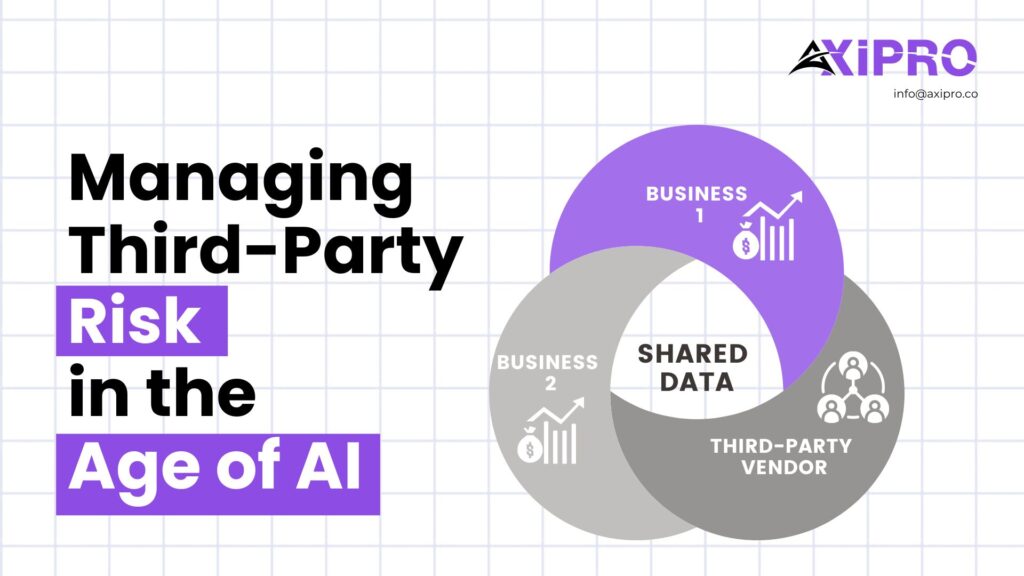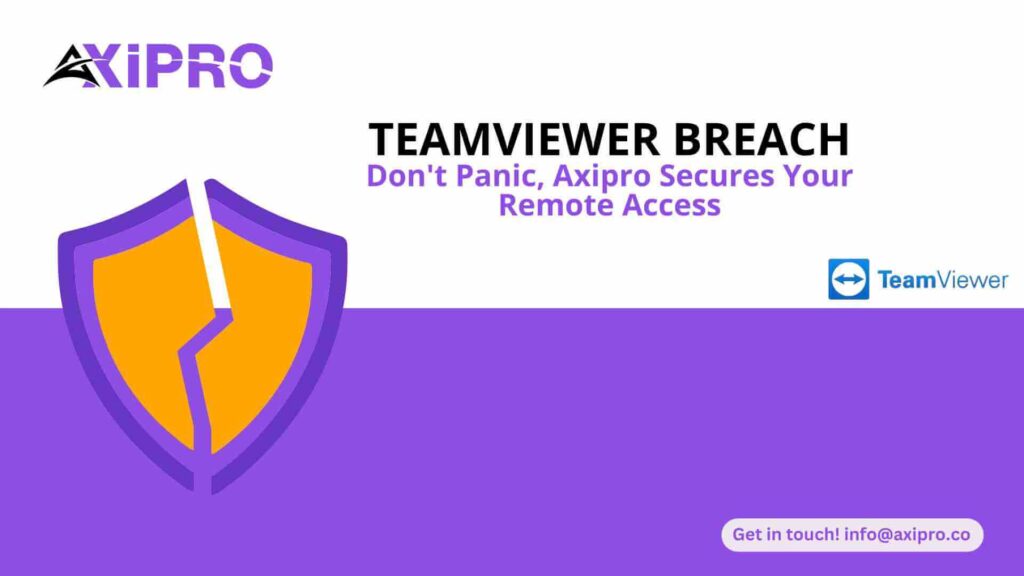Did You Know GDPR Can Affect Your Business? Here’s How
AxiPro is your go-to consultancy for simplifying compliance. With a knack for making complex regulations understandable, AxiPro specializes in helping businesses navigate the GDPR landscape.
Understanding what GDPR is and how it impacts your business operations is crucial. The General Data Protection Regulation (GDPR) is a comprehensive EU data privacy law that came into effect on May 25, 2018. Its primary aim is to enhance and standardize user data privacy across EU nations. But it’s not just for EU-based companies; any organization handling the personal data of EU citizens must comply.
So why should you care about GDPR? Here’s why:
Attract Privacy-Conscious Customers: Modern consumers are increasingly concerned about their data privacy.
Financial Penalties: Non-compliance can lead to hefty fines—up to €20 million or 4% of your global annual turnover.
Reputation and Trust: Compliance boosts your brand’s reputation and fosters trust among your customers.
Ready to make GDPR work for you? Let AxiPro guide you through the maze of regulations. 🌟
Contact AxiPro today to get started on your path to compliance! 🚀
Understanding the General Data Protection Regulation (GDPR)
What Does GDPR Stand For?
GDPR stands for General Data Protection Regulation. Each part of this acronym holds significant weight, making it crucial for any business to understand.
General: This word signifies that the regulation is broad and comprehensive, covering all aspects of data protection.
Data: Refers specifically to personal data, which includes anything from names and email addresses to more sensitive information like financial details.
Protection: The core focus here is safeguarding this personal data against misuse, unauthorized access, and breaches.
Regulation: Indicates that this is a binding set of rules that businesses must adhere to, backed by legal enforcement.
Purpose and Applicability of GDPR
Understanding the purpose and applicability of GDPR can save your business from hefty fines and build customer trust. Here’s how:
Main Objectives
The main objectives of GDPR revolve around two key areas:
Privacy Rights: Ensuring individuals have greater control over their personal data.
Accountability: Making sure organizations are responsible for how they collect, store, and use personal data.
Who Is Affected?
You might think GDPR only matters if you’re based in the EU. Think again! If your organization handles the personal data of EU citizens, you’re on the hook.
EU-based organizations: Must comply regardless of where the data processing takes place.
Non-EU organizations: If you’re offering goods or services to EU citizens or monitoring their behavior, GDPR applies to you too.
Employing best practices in line with GDPR not only helps in achieving compliance but also boosts your brand’s reputation as a trustworthy entity in an age where data breaches are increasingly common.
Key Takeaways
The acronym GDPR stands for General Data Protection Regulation.
Its main goals are enhancing privacy rights and ensuring organizational accountability.
It affects any business handling EU citizens’ personal data, irrespective of geographical location.
Purpose and Applicability of GDPR
General Data Protection Regulation (GDPR), which became effective on May 25, 2018, was introduced to enhance user data privacy across the EU. But what is the purpose of this comprehensive regulation?
Main Objectives
Privacy Rights: At its core, GDPR aims to give individuals more control over their personal data. This includes rights to access, correct, and delete information that organizations hold about them.
Accountability: It places a significant emphasis on accountability. Organizations are required to demonstrate compliance with GDPR principles through clear documentation and transparent practices.
Who Is Affected by GDPR?
Any organization, regardless of its location, that handles the personal data of EU citizens falls under GDPR. Here’s a quick breakdown:
EU-based companies: Naturally, businesses operating within the EU must comply with GDPR.
Non-EU companies: If your business processes or stores data related to EU citizens—even if you’re based outside the EU—you’re still obliged to adhere to GDPR.
Key Takeaways
Privacy rights and accountability are central pillars of GDPR. Whether you’re a local startup or a global enterprise, understanding these principles is crucial for maintaining trust and avoiding hefty penalties.
Benefits and Risks Associated with GDPR Compliance
Advantages of GDPR Compliance
Embracing GDPR compliance can be a game-changer for your business. Here are some key benefits:
Attracting privacy-conscious customers: With data breaches making headlines, consumers are becoming more vigilant about their personal information. GDPR compliance signals to your customers that their privacy is a top priority, which can build trust and loyalty.
Enhancing brand reputation: Demonstrating a commitment to data protection can enhance your company’s reputation. This not only attracts new customers but also solidifies relationships with existing ones.
Improving internal data management: GDPR encourages businesses to streamline their data processes, which can lead to better efficiency and reduced clutter in your systems.
Risks Associated with Non-Compliance
Ignoring GDPR requirements isn’t just a bad look—it’s risky business. Consider the following:
Financial penalties: Non-compliance can result in hefty fines, up to €20 million or 4% of global annual turnover. Ouch!
Reputational damage: Failing to protect customer data can severely tarnish your brand’s image. Once trust is lost, it’s hard to regain.
Operational disruptions: Non-compliance often leads to increased scrutiny and audits, which can disrupt your daily operations and divert resources from more productive activities.
By understanding both the advantages of GDPR compliance and the risks associated with non-compliance, businesses can make informed decisions that align with their goals and values.
Steps to Achieve Compliance with GDPR
Navigating GDPR compliance can seem like a maze. But don’t worry, breaking it down into actionable steps can make the process less daunting. Here’s how to comply with GDPR:
Conducting Vendor Due Diligence
When your business relies on third-party vendors, their compliance status affects yours too. So, it’s crucial to:
Assess Vendor Compliance: Ensure your vendors adhere to GDPR requirements.
Review Contracts: Update agreements to include data protection clauses.
Regular Audits: Periodically audit vendor practices.
Establishing Clear Data Processing Agreements
Having clear data processing agreements (DPAs) is essential. These agreements should:
Define Roles and Responsibilities: Specify who is responsible for what.
Data Protection Measures: Outline the security measures in place.
Subprocessor Management: Detail how subprocessors are managed and audited.
Implementing Security Measures and Training Employees on GDPR Requirements
Security measures and employee training are the backbone of GDPR compliance.
Overview of Robust Security Protocols
Implementing strong security protocols can protect your business from data breaches:
Encryption: Encrypt sensitive data both at rest and in transit.
Access Controls: Implement role-based access controls to limit data exposure.
Regular Updates and Patches: Keep software and systems updated to defend against vulnerabilities.
Necessity and Benefits of Training Sessions
Training your team on GDPR requirements is non-negotiable:
Awareness: Ensure everyone understands the importance of data protection.
Knowledge Transfer: Educate staff on specific GDPR guidelines relevant to their roles.
Ongoing Training: Schedule regular training sessions to keep everyone up-to-date.
By focusing on these aspects, you not only move toward compliance but also build a culture of accountability and transparency around data protection.
The Role of AxiPro in Navigating GDPR Compliance
Services Offered by AxiPro for GDPR Compliance Support
AxiPro brings a wealth of expertise to the table, helping businesses navigate the complex landscape of GDPR compliance. Their services are designed to make the process as seamless as possible, ensuring that your organization not only meets but exceeds regulatory requirements.
Identifying Gaps in Current Practices
Before diving into solutions, it’s essential to understand where your business stands in terms of data protection. AxiPro’s gap analysis service for GDPR compliance is a thorough examination of your current practices to pinpoint areas that need improvement.
Comprehensive Audits: These audits scrutinize every aspect of your data handling processes.
Detailed Reports: You’ll receive a report outlining vulnerabilities and non-compliance issues.
Actionable Insights: Recommendations on how to address these gaps effectively.
This initial step is crucial for creating a targeted action plan that addresses your unique compliance needs.
Steps Taken to Ensure Adherence to Regulations
Once gaps have been identified, AxiPro helps you implement the necessary changes to ensure full compliance with GDPR regulations.
Data Processing Agreements (DPAs): Establishing clear agreements with third-party vendors is vital. AxiPro assists in drafting and reviewing DPAs to ensure they meet GDPR standards.
Security Protocols: Implementing robust security measures is a cornerstone of GDPR compliance. This includes:
Encryption: Protect sensitive data through advanced encryption methods.
Access Controls: Restrict access to personal data based on roles and responsibilities.
Regular Audits: Conduct ongoing audits to ensure continuous compliance.
Training is another key component. Employees must understand their roles in maintaining data privacy and security.
Training Sessions: AxiPro offers tailored training programs that educate your team on GDPR requirements.
Workshops and Seminars: Interactive sessions designed to engage employees.
Online Modules: Flexible learning options that can be accessed anytime.
By focusing on these critical areas, AxiPro ensures that your business not only complies with GDPR but also builds a culture of privacy and accountability.
Enhancing Business Operations Through Compliance
GDPR compliance isn’t just about avoiding penalties; it’s an opportunity to enhance your business operations. By partnering with AxiPro, you can:
Attract privacy-conscious customers who value data security.
Improve internal processes and data management practices such as implementing an ISO 13485 Medical Device Quality Management System (MD-QMS) which demonstrates compliance with regulatory and legal requirements while managing risks effectively.
Gain a competitive edge by being a trusted entity in your industry.
AxiPro’s holistic approach ensures that compliance efforts translate into tangible benefits for your organization, both in terms of operational efficiency and customer trust.
Case Study Highlighting Successful Compliance Implementation with AxiPro’s Assistance
Background Information about the Client Organization
Meet Tech Solutions Ltd., a mid-sized tech company based in the US, dealing primarily with software development and data analytics. With a rapidly growing customer base in the EU, they had to ensure compliance with GDPR to continue their operations seamlessly.
Challenges Faced Prior to Working with AxiPro
Tech Solutions Ltd. encountered several hurdles while trying to meet GDPR requirements:
Lack of clarity on GDPR regulations and their applicability.
Insufficient internal expertise to conduct a thorough gap analysis for GDPR compliance.
Outdated data processing agreements that didn’t meet GDPR standards.
Inadequate security measures and no structured employee training program on data privacy.
Introduction to AxiPro’s Tailored Guidance Services
Tech Solutions Ltd. turned to AxiPro for assistance. AxiPro offers specialized services for GDPR compliance, including:
Gap Analysis Service for GDPR Compliance: Identifying areas where the organization falls short.
Compliance Implementation: Helping update processes and documents to meet regulatory standards.
Training Programs: Educating employees on GDPR requirements.
Vulnerability Assessments and Penetration Testing: Ensuring robust security measures are in place.
AxiPro also provides a range of custom compliance solutions designed to meet unique organizational needs.
Success Stories from Over 10,000 Satisfied Customers Since Founding in 2020
AxiPro’s tailored guidance made a significant impact. Here’s what they achieved with Tech Solutions Ltd.:
Conducted a comprehensive gap analysis, revealing critical areas requiring improvement.
Updated data processing agreements in line with GDPR requirements.
Implemented advanced security protocols safeguarding sensitive information.
Organized extensive training sessions boosting employee awareness and compliance skills.
This case study is one among many success stories from AxiPro’s over 10,000 satisfied customers since its founding in 2020. Ready to take your business to the next level? Contact AxiPro today!
Conclusion: Adapting Your Business for GDPR Success with AxiPro’s Expertise
Ensuring your business aligns with GDPR isn’t just about avoiding hefty fines; it’s about fostering trust and protecting your customers’ privacy. AxiPro stands out as a pivotal ally in this journey, offering tailored solutions to meet compliance requirements seamlessly.
Expert Guidance: With over 10,000 satisfied clients since 2020, AxiPro’s expertise is tried and tested.
Tailored Solutions: From gap analysis to robust implementation strategies, their services are designed to fit your unique needs.
Ongoing Support: Continual performance evaluations and training sessions ensure your team stays informed and compliant.
Don’t risk non-compliance. Let AxiPro help you navigate the complexities of GDPR, turning regulatory challenges into opportunities for growth and trust-building.
FAQs (Frequently Asked Questions)
What is GDPR and why is it important for businesses?
GDPR stands for General Data Protection Regulation, which aims to protect the privacy rights of individuals within the European Union. It is crucial for businesses as it establishes guidelines for the collection and processing of personal information, ensuring compliance to avoid significant financial penalties.
Who Does GDPR Apply To?
GDPR applies to any organization that processes the personal data of EU citizens, regardless of where the organization is located. This includes businesses in non-EU countries if they offer goods or services to EU residents or monitor their behavior.
What are the Risks of Non-Compliance with GDPR?
Non-compliance with GDPR can lead to severe financial penalties, which can be up to €20 million or 4% of a company’s global turnover, whichever is higher. Additionally, companies may face reputational damage and loss of customer trust.
How Businesses Can Achieve GDPR Compliance?
Businesses can achieve GDPR compliance by conducting a thorough gap analysis of their current practices, implementing robust security measures, training employees on GDPR requirements, and establishing clear data processing agreements with vendors.
Services Offered by AxiPro for GDPR Compliance?
AxiPro provides tailored guidance services including gap analysis for GDPR compliance, identifying gaps in current practices, and ensuring adherence to regulations through expert consultation and support.
Why Businesses Should Consider Consulting AxiPro for GDPR Compliance?
Consulting AxiPro can simplify the complex process of achieving GDPR compliance. With a proven track record of assisting over 10,000 satisfied customers since its founding in 2020, AxiPro offers expertise that can help businesses navigate regulatory challenges effectively.










